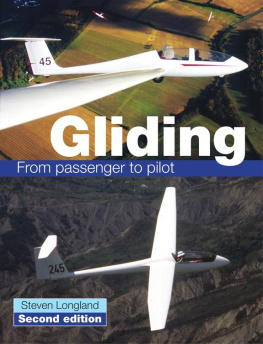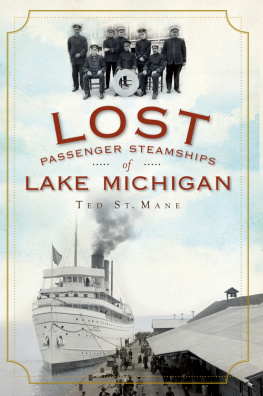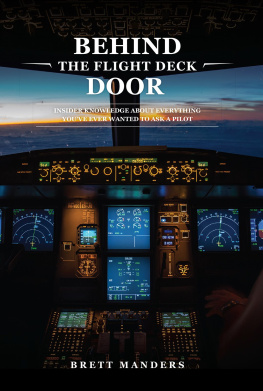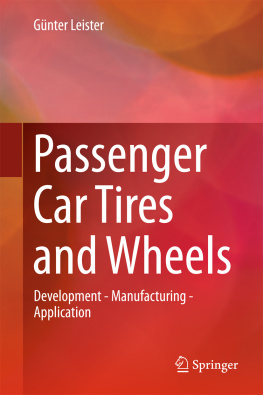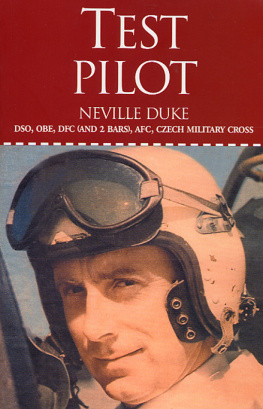Longland - Gliding: from passenger to pilot
Here you can read online Longland - Gliding: from passenger to pilot full text of the book (entire story) in english for free. Download pdf and epub, get meaning, cover and reviews about this ebook. City: Ramsbury;Marlborough, year: 2012, publisher: Perseus Books, LLC;The Crowood Press, genre: Religion. Description of the work, (preface) as well as reviews are available. Best literature library LitArk.com created for fans of good reading and offers a wide selection of genres:
Romance novel
Science fiction
Adventure
Detective
Science
History
Home and family
Prose
Art
Politics
Computer
Non-fiction
Religion
Business
Children
Humor
Choose a favorite category and find really read worthwhile books. Enjoy immersion in the world of imagination, feel the emotions of the characters or learn something new for yourself, make an fascinating discovery.
Gliding: from passenger to pilot: summary, description and annotation
We offer to read an annotation, description, summary or preface (depends on what the author of the book "Gliding: from passenger to pilot" wrote himself). If you haven't found the necessary information about the book — write in the comments, we will try to find it.
Gliding: from passenger to pilot — read online for free the complete book (whole text) full work
Below is the text of the book, divided by pages. System saving the place of the last page read, allows you to conveniently read the book "Gliding: from passenger to pilot" online for free, without having to search again every time where you left off. Put a bookmark, and you can go to the page where you finished reading at any time.
Font size:
Interval:
Bookmark:
First published in 2001 by The Crowood Press Ltd, Ramsbury, Marlborough, Wiltshire, SN8 2HR
www.crowood.com
Revised edition 2012
This e-book edition first published in 2012
Stephen Longland 2001 and 2012
All rights reserved. This e-book is copyright material and must not be copied, reproduced, transferred, distributed, leased, licensed or publicly performed or used in any way except as specifically permitted in writing by the publishers, as allowed under the terms and conditions under which it was purchased or as strictly permitted by applicable copyright law. Any unauthorised distribution or use of this text may be a direct infringement of the authors and publishers rights, and those responsible may be liable in law accordingly.
ISBN 978 1 84797 444 0
Acknowledgements
A number of the illustrations in this book have appeared previously in Sailplane and Gliding (UK glidings official magazine), and/or in training material provided by the BGA. They were drawn by the author of this book, who is grateful to both of the above for allowing him to replay them here and so save himself a lot of time.
My thanks again to the beta-readers, Penny in particular, for ploughing through the chaff of earlier drafts in search of wheat, and to all of them for those interesting suggestions which were possible! Many thanks also to the very generous people who have allowed me to use their excellent photographs without charge.
Special thanks to my brother Simon, who created a 3D model of an ASK21, which has been used as the basis for many of the illustrations.
Of all the dreams of mankind, flight has to have been one of the very best. Like much else, success and familiarity have reduced it to another rather humdrum piece of technical furniture. Yet, as any half-decent pilot will tell you if they can keep a grip on their embarrassment the dream-like qualities that made the idea of flight so compelling in the first place still exist. They are part of mankinds symbolic pursuit of freedom and remain as powerful as ever; promising the possibility of escape, however temporary, and a teasing glimpse of what it must be like not to be forever stuck by the feet to our own dark shadow.
Gliding, as part of sporting aviation, offers a vast range of experiences, from the unusual and stunningly beautiful to the occasionally rather average and intensely frustrating as illustrated by the following description of two contrasting flights.
The radio is off: there is no need to speak to anyone at the moment. The distracting chatter rippling out of other gliders flying across country hundreds of miles further south seemed to be largely about lunch and sandwiches, and questions about whether John has set off to retrieve Mike from yet another off-field landing. The slightly irritating squeak of the variometers audio the reedy little voice of the instrument that tells the pilot whether the glider is climbing or not has also been silenced: the needle on the dial says going up, which is enough. As tellingly, the air through which the glider is flying has been well ironed somewhere during its travels: even the minute tremblings of turbulence that can be felt and heard in the smoothest air lower down have completely vanished.
The glider responds to all of this by being whisper quiet, seemingly suspended in the bright and secret centre of the world. A few barely audible background sounds remain, reminding you that this is the real world: the subdued rush of the airflow over the glider, the gentle hiss of the oxygen entering the rubbery-smelling face mask via a small balloon that swells and collapses rhythmically with each breath, and every so often a creak from the perspex canopy as it contracts in the cold.
Slowly the altimeter winds through 18,000ft. Is this the day finally to gain the third and last Diamond for the coveted Diamond badge? Not quite there yet: it needs a gain of height above the release from the launch of at least 16,400ft. Past attempts have included several not quite there moments rising into the gloomy centre of large clouds where strong lift can propel the glider upwards at huge speeds, to emerge suddenly with a bright visual pop from the side of a snow-white tower into brilliant sunshine at 15,000ft, or 10,000ft always just short of that magic figure.
It is an hour since take-off from the Deeside clubs site at Aboyne in Scotland. After release from the aerotow the flight was a bumpy ride in the rising air below the cumulus clouds, quickly spiralling up to their base at 3,500ft then a dash forwards through the swirling fringes of one clouds upwind edge to make contact with the lee wave off Morven. Millions of tons of air blow against the western edge of this hill and are forced upwards; once over the summit this enormous mass of air then plunges downwards but if the weather conditions are right, as they are today, it bounces up and then falls again. Like the ripples trailing downstream of a large and barely submerged stone in a swiftly flowing river, these gigantic standing waves form a train which can stretch for hundreds of miles. In other parts of the world where the mountains are higher, these waves can rise to well over 50,000ft. On this day every hill in Scotland is triggering a wave, resulting in a complicated pattern of aerial hills and valleys which, marked by cloud or not, are like elegantly smoothed, often exaggerated, but occasionally rather approximate copies of the ups and downs of the ground below.
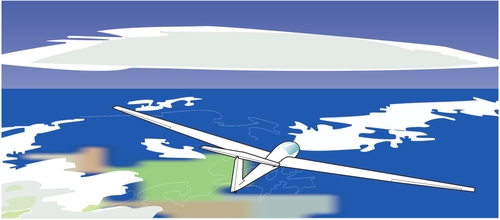
In wave.
Unlike past attempts at Diamond height there is no need to fly on the instruments, head down in the whirring cockpit, submerged in a cold and damp world of grey. Today the sun beats down but although the cockpit seems warm, cold feet remain a problem because they are hidden in the darkness under the instrument panel. Thicker socks would have been a good idea.
From the ground, the 50ft span glider, facing into a 45kt westerly wind, is hard to see, little more than a tiny motionless white cross set into the brilliant blue ceramic of the sky but from the cramped cockpit the pilot is presented with a view that is spectacularly vast. This is not peeping sideways out of the tiny, prison-like window of a commercial airliner, but being immersed in an immense and archetypal landscape through which it is possible to move almost as you wish. Far away to the south lies Edinburgh, hidden in the gloomy depths beneath an unbroken sheet of dense and blindingly white cloud. To the north the air is incredibly clear and dotted randomly, way below, with flocks of small, sheep-like cumulus clouds. Just visible in the far distance are Elgin, Inverness, and the curve of the east coast which leads from the Moray Firth, away to John OGroats.
The dividing line between the starched linen-white world to the south and the richly stippled realm of greens and browns to the north lies straight down the Dee valley. Flying directly above this division creates an odd sensation, as if the glider and pilot are stitching the two halves together. Yet what overwhelms this odd yet not entirely untruthful conceit of the brain is not so much the view which is of glass-like clarity but the extraordinary stillness.
The altimeter needle crawls past 21,000ft enough height to gain that final Diamond, and with sufficient margin to make it certain. The silence is unbroken by applause.
By contrast it is the middle of summer, at Gransden Lodge near Cambridge. The sky is blue and slightly hazy, the visibility rather poor, and the wind fresh from the east. By about midday the sun has done its best to create the upgoing currents of air or thermals that gliders need to stay airborne over the regions chessboard landscape. When the thermals do finally appear they are rough, as if quality control has taken the day off probably gone to the seaside to escape the heat. Someone already airborne has reported that none of the thermals has so far reached beyond about 2,500ft, and even from the ground pilots can see that today cross country flying, even soaring locally, is going to be hard work. But there we are - if you like cross country flying you will go and do it even if the conditions are difficult, and occasionally just because they are.
Font size:
Interval:
Bookmark:
Similar books «Gliding: from passenger to pilot»
Look at similar books to Gliding: from passenger to pilot. We have selected literature similar in name and meaning in the hope of providing readers with more options to find new, interesting, not yet read works.
Discussion, reviews of the book Gliding: from passenger to pilot and just readers' own opinions. Leave your comments, write what you think about the work, its meaning or the main characters. Specify what exactly you liked and what you didn't like, and why you think so.

